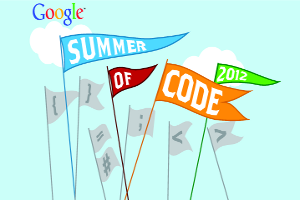This year’s Summer of Code has already started, and Epiphany has been lucky enough to get two students assigned. Let’s see who they are and what they’ll be working on.
William Ting, Data Synchronization
William is a last year student of Computer Science at the University of Texas, Austin. He’ll be helping to alleviate a paradigmatic first world problem: I use Epiphany from so many computers that all my data is scattered around and I suffer a permanent pseudo-memory loss condition.
The battle plan is easy. We’ll reuse Firefox’s excellent design for a data sync protocol plus their free-to-use servers (we assume that’s what they were hoping for!), and will integrate the feature right into our browser. Since all the specs and implementation are open GNOME could host in the future a sync.gnome.org instance, but for now we leave that out of the scope of our summer project. Hopefully by 3.6 you’ll be able to optionally enable this functionality, cruise through the web from your tablet, bookmark that hilarious XKCD comic strip, and have it show up in your good old laptop just like that.
I’ll be mentoring this project myself, which was initially proposed by Igalia’s very own Joanmarie Diggs.
Yann Soubeyrand, Anti-phishing Support
Yann is a first year student at the École Nationale Supérieure d’Informatique et Mathématiques Appliquées de Grenoble. His task will be to solve a complicated problem that Epiphany has suffered for a long time: for most users the information provided in the URL entry is not enough to judge whether the page they are visiting is safe. The SSL or certification data is useless for most people, and by showing scary warnings about things they don’t understand at best you’ll train them to just click through to get to the content. To make things worse, most of the time those warnings do not actually indicate someone is trying to scam you, just that apparently setting up web servers correctly is difficult. So all in all, while useful, the information we currently show in the UI is really not that great for the 99% out there.
With this in mind, we’ll try to do the following: using the Google Safebrowsing APIs we’ll try to request authoritative information about the potential “phishiness” of the pages you visit. If we get a warning through this channel we can be confident about there being a security threat, so we’ll show a big, clear message on top of the web content. No jargon about outdated certs or VeriSign trying to take over the planet, just “Listen, our best people tell us this page is almost certainly not safe. Let’s not go there.”. We think this will significantly increase the safety of the browser without violating the user’s privacy, since Google’s API do not require you to disclose the pages you are visiting to validate them (magic? no, science).
Sergio Villar will be mentoring this project.
That’s it, let’s roll
That’s it for now. We’ll make sure to keep you updated about these and other developments in GNOME’s very own web browser. Thanks to GNOME for choosing our proposals, to Google for sponsoring Summer of Code again, and of course to Igalia for its continued support for GNOME and for allowing us to spend our time mentoring the fearless next wave. Happy hacking!


Pingback: Maemo developers: Summer of Code, Web 2012 vintage | Linux-Support.com
Suh-weet! 🙂
The one thing I find more awesome than having this problem solved is having this problem solved by someone from my alma mater. Hook ’em Horns and thank you William!!